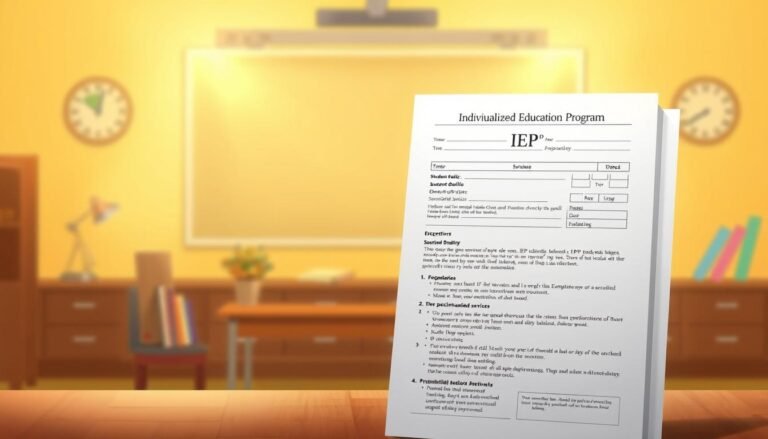
Unlocking Potential: How to Help Your Child Thrive with an IEP
Introduction
Every child possesses unique talents and abilities, but for some, these gifts may be overshadowed by challenges that make traditional learning environments difficult. An Individualized Education Program (IEP) offers a beacon of hope for these children, serving as a tailored roadmap for their educational journeys. Unlocking Potential: How to Help Your Child Thrive with an IEP not only reflects the importance of creating customized learning strategies but also highlights the role of parents, educators, and specialists in fostering a positive learning experience.
By understanding the IEP process and actively participating in it, you have the power to transform challenges into opportunities, enabling your child to flourish academically, socially, and emotionally. With that in mind, let’s explore the multifaceted avenues through which you can help your child unlock their full potential.
Understanding the IEP: A Comprehensive Overview
What is an IEP?
An Individualized Education Program (IEP) is a legally binding document designed for children with disabilities who require special education services. According to the Individuals with Disabilities Education Act (IDEA), the IEP must provide the necessary accommodations, modifications, and supports that allow students to thrive in the school environment.
The IEP Process
The IEP process typically involves several key steps:
- Evaluation: Before an IEP can be created, a comprehensive evaluation must be conducted to determine the child’s educational needs.
- Developing the IEP: A team consisting of parents, teachers, and related service personnel come together to develop the IEP.
- Implementation: Once approved, the IEP is executed in the classroom, with educators providing the necessary supports.
- Review: The IEP is reviewed at least annually to ensure it continues to meet the child’s needs.
Key Components of the IEP
Understanding the components that make up an IEP is crucial for parents. Here’s a breakdown of the core elements:
| Component | Description |
|---|---|
| Present Levels of Performance | A summary of the child’s current academic achievement and functional performance. |
| Goals and Objectives | Specific, measurable goals that the student will achieve within a year. |
| Services Provided | A list of special education services, therapies, and supports. |
| Inclusion in General Education | Details about how much time the child will spend in general education settings. |
| Assessment Modifications | Adjustments or accommodations required for standardized testing. |
Case Study: Sarah’s Journey
Meet Sarah, a bright 10-year-old with autism spectrum disorder. Initially struggling in a traditional classroom setting, Sarah’s parents sought an evaluation. With the help of a pediatric neuropsychologist and educators, they developed an IEP that included speech therapy, a tailored behavior intervention plan, and accommodations for test-taking.
Over the year, Sarah showed remarkable progress. Her confidence grew, and she became an active participant in her classroom, which exemplifies how a well-structured IEP can be transformative. This journey underscores the significance of Unlocking Potential: How to Help Your Child Thrive with an IEP.
Collaborating with Educators and Specialists
Building a Strong Team
Unlocking potential is not a solo endeavor; it flourishes through collaboration. As a parent, becoming an integral part of the IEP team is essential. Here are steps to build a productive partnership:
- Communicate Regularly: Foster open lines of communication with teachers and specialists to discuss your child’s progress and challenges.
- Attend All Meetings: Actively participate in IEP meetings, sharing insights about your child’s strengths, interests, and concerns.
- Educate Yourself: Familiarize yourself with special education law and your child’s rights to enhance your advocacy skills.
Establishing Trust and Rapport
Creating a nurturing relationship with educators paves the way for better support for your child. Trust built on mutual respect encourages the team to focus on what truly matters: your child’s growth and success.
Real-World Example: A Collaborative Approach
In a suburban school, John, a sixth grader with learning disabilities, struggled with reading comprehension. His parents met regularly with his teachers, resulting in the implementation of a reading intervention program tailored to his needs. This proactive engagement exemplifies how collaboration can effectively unlock potential, helping John thrive.
Navigating Goals and Progress Monitoring
Setting Realistic and Achievable Goals
Creating specific and measurable goals is vital in an IEP. For example, if a child struggles with math, instead of a vague goal like “improve math skills,” an effective goal would be “achieve a score of 80% or higher on math assessments by the end of the IEP period.”
Progress Monitoring
Monitoring your child’s progress towards IEP goals not only helps you assess their advancement but also provides data to adjust strategies if necessary. Regular updates from teachers can help keep the lines of communication open.
Case Study: Alex’s Academic Breakthrough
Alex, a 12-year-old with ADHD, had difficulty completing assignments. His IEP included a goal to finish homework with 90% accuracy by implementing a homework planner and regular check-ins with his teacher. At the end of the year, Alex not only met his goal but also gained independence in his work habits. This further emphasizes the concept of Unlocking Potential: How to Help Your Child Thrive with an IEP by creating achievable goals combined with progress monitoring.
The Importance of Social and Emotional Learning
Fostering Social Skills
Social skills are often overlooked but are crucial for your child’s overall development. IEPs can incorporate social skills training, helping children form friendships and navigate social situations. Look into programs that focus on social competence to bolster confidence and connection in peer relationships.
Building Resilience
Resilience is paramount in overcoming obstacles. Schools can incorporate resilience training into the IEP, helping children learn to cope with challenges effectively. Teach your child that persistence and effort in the face of difficulty are marks of true strength.
Example: The Support Group Model
A school in California implemented a support group for students on IEPs. This group allowed children to share their experiences and stories, facilitating friendships and a sense of belonging. The result? Increased self-esteem and improved social interactions among students, exemplifying how addressing social-emotional learning can unlock potential in children with IEPs.
Empowering Your Child
Encouraging Self-Advocacy
One of the most valuable life skills you can instill in your child is self-advocacy. Teach them to express their needs, seek help when necessary, and understand their rights regarding education. An empowered child is more likely to actively participate in their educational journey.
Celebrating Achievements
Recognizing and celebrating even the smallest achievements boosts your child’s motivation and confidence. Create a “success board” where your child can display their accomplishments, fostering a positive mindset.
Motivational Case Study: Mia’s Transformation
Mia, diagnosed with dyslexia, struggled with reading and writing. Over time, her parents taught her to speak up in her IEP meetings about her learning preferences. With newfound confidence, Mia advocated for audiobook versions of her reading materials. This small adjustment significantly improved her grades, illustrating how empowerment is crucial in Unlocking Potential: How to Help Your Child Thrive with an IEP.
Conclusion
Unlocking potential through an Individualized Education Program is not merely about legal compliance but also about fostering an environment where children can thrive holistically. By collaborating with educators, setting concrete goals, nurturing social-emotional skills, and empowering your child, you create a robust foundation for success. Remember, your engagement and advocacy are powerful tools in navigating the complex educational landscape your child encounters.
As you embark on this journey with your child, maintain the belief that they are capable of extraordinary things. Never lose sight of your vital role in supporting their journey through the educational system. Your child’s potential is limitless—unlock it by engaging fully in the process.
FAQs
1. What is the difference between an IEP and a 504 Plan?
An IEP is specifically for children who qualify for special education services, while a 504 Plan provides accommodations for students with disabilities who need support but do not require special education services.
2. How often should an IEP be reviewed?
The IEP must be reviewed at least once a year, but it can be updated more frequently if changes are needed based on the child’s progress.
3. Can parents request an IEP evaluation?
Yes, parents have the right to request an evaluation at any time if they believe their child may need special education services.
4. How can I support my child’s IEP at home?
You can support your child by reinforcing the goals set in the IEP, using strategies outlined for learning, and maintaining open communication with teachers.
5. What should I do if I disagree with the IEP?
If you disagree with any aspect of the IEP, it’s essential to discuss your concerns with the IEP team. If necessary, you can seek mediation or request a due process hearing.
Unlocking Potential: How to Help Your Child Thrive with an IEP is a comprehensive journey through understanding, collaboration, and empowerment. Embrace the process, stay engaged, and most importantly, believe in your child’s limitless potential.
















